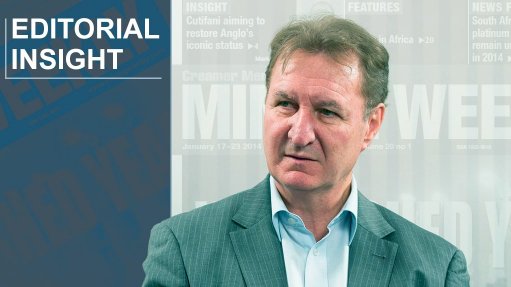
The fuel cell plant launched this week has important potential demand implications for South Africa’s platinum mining industry.
With the Department of Trade and Industry, Isondo Precious Metals, headed by CEO Vinay Somera, has invested in a state-of-the-art German manufacturing plant technology for the catalyst coated membrane and membrane electrode assembly (MEA) currently used by international manufacturing companies.
It is positioning to produce MEA for the international market within a South African special economic zone (SEZ) at lowest cost, using technology that has been developed internationally.
This enables South Africa to produce from day one into a market that is taking off, driven by the tightening of vehicle emissions legislation.
Currently, vehicle emission standards can only be met using battery electric vehicles or fuel cell electric vehicles.
Targeted are the proton exchange membrane (PEM) fuel cell, which dominates the market, and the direct methanol fuel cell (DMFC).
DMFCs use the same underlying PEM membranes catalyst but the platinum content can be six times higher than PEM fuel cells. DMFCs make use of liquid methanol as a fuel and not hydrogen.
The same PEM technology goes into electrolysers, which split water into hydrogen and oxygen to produce hydrogen. It uses the same underlying technology as the PEM but up to ten times more platinum-group metal content.
Even before fuel cells can become viable, the biggest growth industry now is hydrogen production.
It is one of the biggest growth areas in the world. Electrolysing water produces the clean, green hydrogen through solar, wind and clean technology electrolysation.
The Japanese and Germans are focusing on hydrogen as the biggest energy storage, coming either in battery form or as methanol or hydrogen.
The Americans are focusing on batteries, the Chinese on methanol and the rest of the world on hydrogen.
The major Hydrogen Council was launched at Davos last month.
A collection of MEAs make up a fuel cell stack for supply to original-equipment manufacturers globally, including major car assemblers, all of which outsource all components, and Isondo will supply into that value chain.
A stack with plumbing and electronics is a fuel cell system.
Something like a Toyota Mirai requires a 114 kW fuel cell stack, which would contain about 20 g of platinum in it.
The big issue is to bring down the cost of the technology to make it economically viable for the international market and, importantly, the amount of platinum used also needs to be significantly reduced in order to sustain market growth.
The two SEZs developed furthest are the OR Tambo SEZ and the Dube TradePort SEZ. It has not yet been decided which of these will host the plant, which is modular and easily expanded.